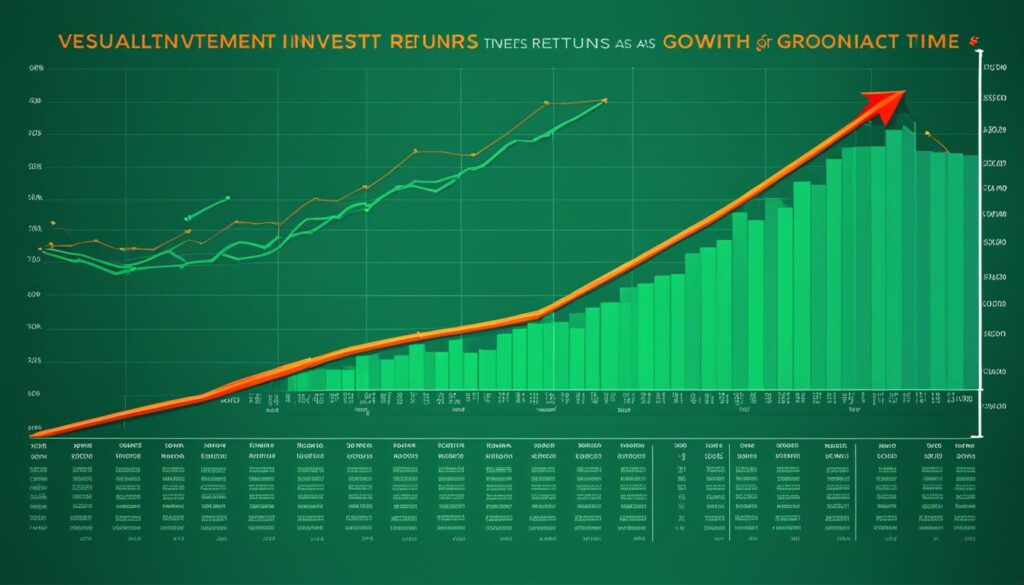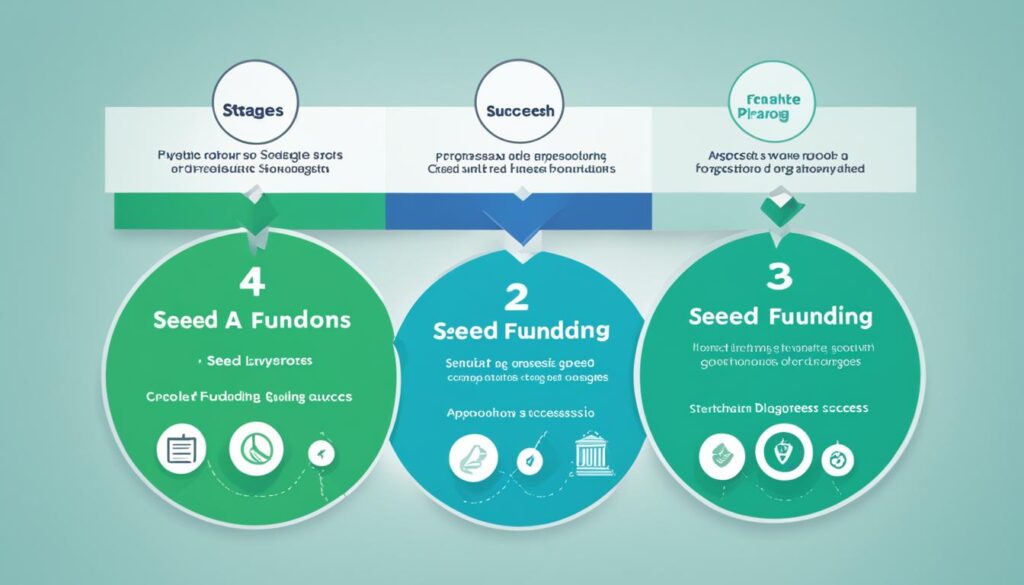As a venture capitalist, I measure the success of my investments through a variety of key metrics. The primary goal is to maximize investment returns and identify high-growth potential companies that can deliver significant value. I closely monitor factors like internal rate of return (IRR), exit valuations, and the funding rounds raised by portfolio startups to gauge the performance of my investments. Additionally, I take a holistic view of my portfolio’s overall performance to ensure I am achieving my investment objectives. Understanding the various success indicators used by venture capital firms is crucial for entrepreneurs seeking funding and investors looking to allocate their capital effectively.
Key Takeaways
- Venture capital firms measure investment success through a variety of key metrics, including IRR, exit valuations, and funding rounds.
- The primary goal is to maximize investment returns and identify high-growth potential companies.
- Venture capitalists take a holistic view of their portfolio’s overall performance to ensure they are achieving their investment objectives.
- Understanding the success indicators used by venture capital firms is crucial for entrepreneurs seeking funding and investors looking to allocate their capital.
- Monitoring startup valuations and funding progress are important factors in measuring investment success.
But what are the specific strategies and metrics that venture capital firms use to measure the success of their investments? Let’s dive deeper into this topic and explore the key factors that define investment success in the world of venture capital.
Understanding Venture Capital Investment Goals
As a venture capitalist, my primary focus is on identifying and investing in high-growth potential companies that have the ability to scale rapidly and deliver significant returns. The key investment goals are to find innovative startups with disruptive technologies or business models and to maximize the returns on those investments.
High-Growth Potential Companies
Venture capitalists are typically looking for companies that can achieve exponential growth, often in emerging or rapidly evolving industries. By carefully vetting and supporting these high-potential startups, we aim to generate outsized returns that can offset the risks associated with our investments.
Maximizing Returns on Investment
Ultimately, the success of our venture capital investments is measured by our ability to maximize the returns on those investments. We employ a range of strategies and metrics to identify the most promising opportunities, monitor their progress, and position our portfolio companies for long-term growth and profitability.

Investment Returns: The Primary Metric
At the core of how venture capital firms measure the success of their investments is the investment return. The two most commonly used metrics are the internal rate of return (IRR) and the multiple on invested capital (MOIC).
Internal Rate of Return (IRR)
IRR is a measure of the annualized rate of return on an investment, taking into account the time value of money. It helps venture capitalists assess the profitability of their investments and make informed decisions about future allocations of capital.
Multiple on Invested Capital (MOIC)
MOIC, on the other hand, represents the total return generated on the original investment, regardless of the time frame. This metric provides a clear picture of the overall performance of a venture capital firm’s portfolio, allowing them to evaluate the success of their investment strategies.
Venture capitalists closely monitor these key performance indicators to assess the progress and potential of their portfolio companies. By tracking IRR and MOIC, they can make data-driven decisions that maximize the returns on their investments and achieve their desired investment objectives.

Portfolio Performance: A Holistic View
As a venture capitalist, I understand that while individual investment metrics like internal rate of return (IRR) and multiple on invested capital (MOIC) are important, it’s essential to take a holistic view of my portfolio’s overall performance. By analyzing the collective returns and risk profiles of my investments, I can ensure that I’m achieving my desired investment objectives and making the most informed decisions about allocating my resources and capital.
This comprehensive approach allows me to identify trends, mitigate risks, and make strategic adjustments as needed. By considering my portfolio as a whole, I can better understand the strengths and weaknesses of my investment strategy and make the necessary changes to maximize the likelihood of long-term success.
To get a complete picture of my portfolio’s performance, I closely monitor a range of factors, including the diversification of my investments, the progress of my portfolio companies in securing additional funding rounds, and the potential exit opportunities that may arise. This holistic view enables me to make well-informed decisions that support the overall growth and profitability of my venture capital investments.
| Metric | Description | Importance |
|---|---|---|
| Portfolio Diversification | The spread of investments across different industries, stages, and risk profiles. | Diversification helps mitigate the impact of individual failures and reduces overall portfolio risk. |
| Funding Round Tracking | Monitoring the ability of portfolio companies to secure additional seed, Series A, Series B, and beyond funding. | Successful funding rounds indicate the growth potential and execution capabilities of portfolio companies. |
| Exit Opportunities | Identifying potential acquisition or public offering opportunities for portfolio companies. | Successful exits are the ultimate indicator of investment success, generating significant returns for the venture capital firm. |
By taking this holistic approach to portfolio performance, I can make more informed decisions, refine my investment strategies, and ultimately drive long-term success for my venture capital firm and its investors.

Exit Strategies: The Ultimate Success Indicator
The ultimate success indicator for venture capital investments is the exit strategy. As a venture capitalist, I closely monitor the progress of my portfolio companies, working diligently to identify the optimal exit strategy that will maximize the returns on my investments.
Initial Public Offering (IPO)
One such exit strategy that I find particularly compelling is the initial public offering (IPO). When a portfolio company goes public and its shares begin trading on a stock exchange, it can generate significant returns for the venture capital firm. The increased visibility, access to public markets, and potential for growth that an IPO provides are all factors I carefully consider when evaluating the success of my investments.
Mergers and Acquisitions
Alternatively, a successful merger and acquisition (M&A) event can also provide lucrative returns for my venture capital firm. When a portfolio company is acquired by a larger entity, it can be an indication of the value and potential that my team recognized in the early stages of the investment. I closely track the progress of my portfolio companies, always seeking to identify the right time and opportunity to execute a favorable exit strategy, whether through an IPO or an M&A transaction.

How do venture capital firms measure the success of their investments?
Venture capital firms measure the success of their investments through a multi-faceted approach that begins with a rigorous due diligence process and continues with ongoing monitoring and evaluation.
Due Diligence Process
During the due diligence phase, venture capitalists carefully assess the potential of a startup, its market potential, the strength of the management team, and the viability of the business model. This thorough analysis helps them identify the most promising investment opportunities.
Monitoring and Evaluation
Once an investment is made, venture capitalists actively monitor the progress of their portfolio companies, tracking key performance indicators, providing strategic guidance, and making adjustments as necessary. This hands-on approach allows them to effectively measure the success of their investments and make informed decisions about future allocations of capital.

Startup Valuations: A Key Factor
As a venture capitalist, I closely monitor the valuations of the startups in my portfolio as a crucial metric for measuring the success of my investments. I employ various valuation methodologies to assess the current worth and future growth potential of these innovative companies.
Valuation Methodologies
One of the primary valuation approaches I use is discounted cash flow (DCF) analysis. This method allows me to estimate the intrinsic value of a startup by projecting its future cash flows and discounting them back to the present. I also rely on comparable company analysis, where I compare the startup’s financial performance and market position to that of similar publicly traded companies to determine an appropriate valuation range.
Additionally, I often utilize a milestone-based valuation model, which ties the startup’s valuation to the achievement of specific operational, financial, or technological milestones. This approach helps me assess the startup’s progress and potential as it navigates the various stages of growth.
As my portfolio companies raise subsequent funding rounds, I closely track the changes in their valuations. These shifts serve as a key indicator of the startup’s growth trajectory and the success of my investment decisions.
Startup valuations are a critical factor in my decision-making process, providing valuable insights into the performance and potential of the companies I invest in. By carefully analyzing these metrics, I can make informed decisions that maximize the returns on my venture capital investments.

Funding Rounds: Tracking Progress
As a venture capitalist, I closely monitor the funding rounds raised by my portfolio companies as a key indicator of investment success. The ability of a startup to secure additional capital, from seed rounds to later-stage Series A, B, and beyond, demonstrates their growth potential and the venture capitalist’s ability to identify and support promising investments.
Seed Funding
Seed funding typically marks the initial influx of capital into a startup, usually when the company is in the early stages of development and has minimal revenue. In recent years, we’ve seen a common trend in the startup industry towards growth in seed-stage funding rounds, evolving from small checks to multimillion-dollar rounds. Pre-seed rounds have also gained popularity, acting as the first round of institutional capital for startups to explore product-market fit and hire early employees. Angel investors, accelerators/incubators, and dedicated VC funds often participate in these critical early-stage funding rounds.
Series A, B, and Beyond
As startups in my portfolio demonstrate their ability to execute on their business plans, attract new investors, and scale their operations, they often seek funding rounds such as Series A, B, C, and beyond. The average Series A funding amount in the startup industry was reported to be $18.7 million as of 2024, with investors typically purchasing between 10% to 30% of the business, impacting the company’s valuation. These subsequent funding rounds are a strong indicator of the startup’s growth potential and the venture capitalist’s ability to support their success.
By closely tracking the funding progress of my portfolio companies, I can assess the ongoing success and trajectory of my investments, making informed decisions about future allocations of capital. The funding round milestones serve as a powerful metric for measuring the performance and growth of the startups I have chosen to back.

Risk Management Strategies
As a venture capital firm, we understand the inherent risks associated with investing in high-growth startups. To ensure the long-term success of our portfolio, we employ various risk management strategies that are crucial to our investment approach.
Diversification
One of the cornerstone principles of our risk management strategy is diversification. We strive to spread our investments across a wide range of industries, stages of growth, and risk profiles. This allows us to mitigate the impact of individual failures and enhance the overall resilience of our portfolio.
Exit Planning
In addition to diversification, we place a strong emphasis on exit planning. We work closely with our portfolio companies to identify and prepare for potential acquisition or public offering opportunities. By proactively addressing exit strategies, we can maximize the returns on our investments and provide our founders with the resources and guidance they need to navigate the complexities of the startup ecosystem.
By implementing these comprehensive risk management strategies, we are able to navigate the inherent uncertainties of the venture capital industry and increase the likelihood of generating strong returns for our investors.

Venture Capital Industry Trends and Challenges
As a venture capitalist, I’m constantly keeping an eye on the ever-evolving landscape of the industry. The rapid advancements in emerging technologies, such as artificial intelligence, blockchain, and renewable energy, have opened up exciting new investment opportunities. These disruptive innovations are reshaping entire industries and creating a new wave of high-growth potential startups that are capturing the attention of venture capitalists like myself.
Emerging Technologies
The rise of transformative technologies has significantly impacted how I evaluate and measure the success of my investments. Startups leveraging AI, blockchain, and renewable energy solutions are presenting compelling value propositions and driving innovation across a wide range of sectors. I closely monitor the progress and market traction of these technology-driven ventures, as their ability to scale and disrupt established industries can be a key indicator of their investment potential.
Regulatory Landscape
Alongside the technological advancements, the regulatory environment surrounding venture capital activities is also in a state of flux. Evolving rules and policies, such as those related to cryptocurrency regulations, data privacy, and sustainability initiatives, can have a direct impact on the strategies and success metrics I use to assess my portfolio companies. Staying informed and adapting to these regulatory changes is crucial for venture capital firms like mine to navigate the complexities of the industry and position our investments for long-term growth and profitability.
